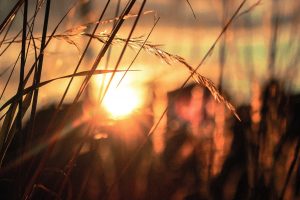Fescue grass has long been the first choice for the home owners of Australia’s cooler regions. A cool season all-rounder that is as good looking as it is tough, its popularity throughout the country’s southern reaches is due to the fact that it has proven itself over the years as one of the very best choices for Australia’s unique conditions.
If you’re trying to decide whether or not fescue is the right option for your backyard, there are a few positives and negatives to take into account.
Let’s have a look at what fescue has to offer.
Pros
If you’re looking for a low maintenance cool season grass, it doesn’t get any better than fescue. It isn’t a particularly thirsty grass, and due to the fact that it is grown in climates that are less hot and more prone to regular rain, it is usually able to survive quite happily without the need for irrigation. The roots of fescue run particularly deep – often down to a depth of 6+ feet – which means they have far greater access to underground moisture than other, more shallow-rooted grass varieties do. The only time that you may need to water your fescue grass is in an extended dry spell.
On top of the drought tolerance, the general hardiness of fescue is almost impossible to beat. The ability to withstand those dry spells makes it ideal for the cool yet dry areas of Southern SA and WA, while its ability to cope with stiff frosts make it an ideal candidate for Victoria and Tasmania.
You’ll find that you won’t need to roll the mower out as often with fescue when compared to other grass varieties. Fescue grass isn’t a particularly quick grower, so will save you the need to cut it back every weekend. When you do give it a mow, try to cut it relatively high (between 7cm and 10cm), as mowing any lower can expose the sod, drying it out. This may result in bare patches forming in your lawn.
Surprisingly, while the established grass doesn’t grow dramatically fast, fescue is rather quick to germinate. The new blades will generally start appearing less than two weeks after sowing, meaning that you’ll be able to enjoy your lawn sooner than you might realise.
Another aspect of fescue’s hardiness is the fact that it isn’t really bothered by poor soil, happily growing in an average bed. Like any grass, if you give it ideal conditions (fertilised, nitrogen rich soil with a neutral pH) it will obviously look its best, but it isn’t a required aspect of your lawn maintenance routine.
Cons
For all of fescue grass’s toughness, it does have one main weak spot. In wet conditions, you may find that it is susceptible to invasion from pests and diseases. Good soil drainage is important, as these problems often come from soil being waterlogged after a downpour, which will offer the right conditions for these things to thrive. While a preventative pesticide or fungicide treatment may be worth looking at, it’s more a case of simply being alert about scanning for possible problems in your lawn.
The other main negative with fescue is a purely cosmetic one – it’s a rather coarse customer. The bristly feel of the blades may not be ideal for those backyards that are used to tire out the kids, as while it is a great looking grass, it’s not the first choice to roll around on.
The Options
McKays has three different fescue options available:
McKays’ Turf-Type Tall Fescue is the standard fescue option that has been used in Australian backyards for decades.
McKays’ RTF Tall Fescue is essentially the standard seed, but with one added feature – it has the ability to quickly repair itself when damaged, making it the perfect choice for heavy traffic backyards.
McKays’ Parks Blend, on the other hand, is a mix of 50 percent fescue, 40 percent Kentucky Bluegrass and 10 percent slow release fertiliser. It was designed to meet the demands placed on Australia’s parks and recreation areas, and will do just as well in your backyard.
For any other queries, or to find out which variety will suit your situation, contact the friendly seed specialists at McKays.

